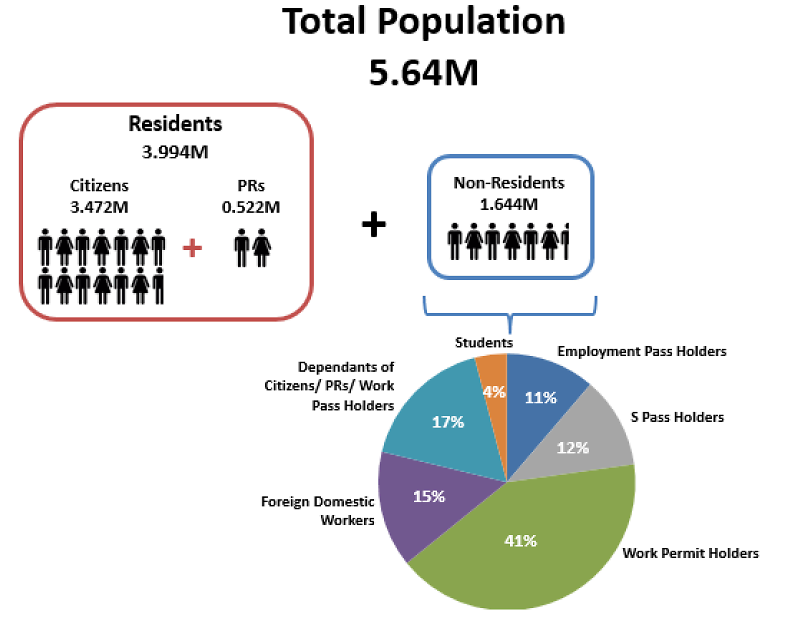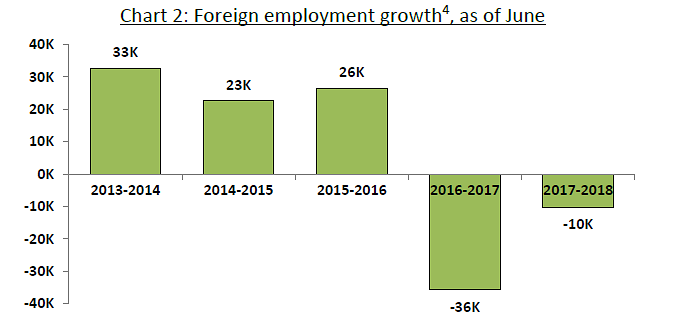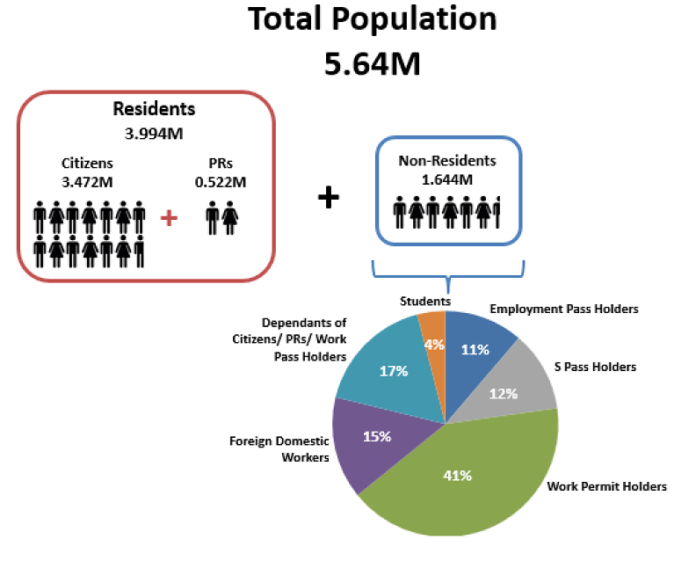SINGAPORE: Singapore’s population rose 0.5 per cent to 5.64 million from 2017 to 2018, latest figures showed on Thursday (Sep 27).
The slight increase over the past year was mainly due to stable growth in citizen population, which rose 1 per cent to 3.47 million citizens as of June, according to statistics released by the Prime Minister’s Office (PMO) Strategy Group in its annual Population in Brief (PIB) report.
The 1 per cent growth in citizens was due to citizen births and immigration.

(Graph: Prime Minister’s Office Strategy Group)
There were 22,076 new citizens last year – the second-highest number in the last 11 years. The majority (65.7 per cent) were from Southeast Asian countries, with 28.6 per cent from other Asian countries and 5.7 per cent from countries outside Asia.
About 1,600, or 7 per cent, of new citizenships were granted to children born overseas to Singaporean parents, according to the report.
Singapore grants between 15,000 and 25,000 new citizenships annually “to individuals who are committed to making Singapore their home”, the PMO Strategy Group said in the report.
It added: “They either share family ties with Singaporeans, or have studied, worked or lived here for some time.”
The permanent resident (PR) figures, meanwhile, remained stable over the past year, at 522,000. In 2017, 31,849 were granted PR status.
Of the new PRs, 60.1 per cent were from Southeast Asian countries, 31.8 per cent from other Asian countries and 8.1 per cent from countries outside Asia.
Together, PRs and citizens made up 3.99 million residents in Singapore as of June 2018.

Number of Singapore citizenships and permanent residences granted. (Graph: Prime Minister’s Office Strategy Group)
The non-resident population also remained stable last year at 1.64 million, with a dip of about 10,000 from the previous year, according to the PIB report. The non-resident population includes work permit holders, foreign domestic workers and international students.
The decline, though not as steep as 2017’s, is mainly attributed to a decrease in work permit holders in the construction and marine shipyard sectors.

Foreign employment growth, as of June 2018. (Photo: Prime Minister’s Office Strategy Group)
The report also found that owing to increasing life expectancy and low fertility rates, the proportion of Singapore’s ageing population – aged 65 years and above – is rising, and at a faster pace compared to the last decade.
Between 2017 and 2018, the proportion of citizens aged 65 and above increased from 14.4 per cent to 15.2 per cent.
The median age of the citizen population rose from 41.3 years to 41.7 years in the same period.

(Photo: Prime Minister’s Office Strategy Group)





